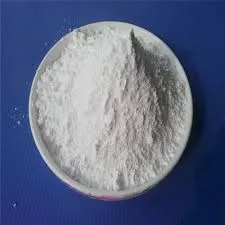The Active Pharmaceutical Ingredient in Paracetamol A Comprehensive Overview
Paracetamol, also known as acetaminophen, is one of the most widely used medications globally, favored for its analgesic (pain-relieving) and antipyretic (fever-reducing) properties. Despite its ubiquitous nature, many consumers are unaware of the intricacies surrounding its active pharmaceutical ingredient (API) and how it functions within the body. This article delves into the significance, mechanisms, and considerations associated with paracetamol's active pharmaceutical ingredient.
Understanding Active Pharmaceutical Ingredients
In pharmaceutical terminology, an active pharmaceutical ingredient is the substance in a drug that is biologically active. For paracetamol, the API is acetaminophen itself. The effectiveness of paracetamol hinges on its ability to modulate pain and fever, making it an essential component of various therapeutic regimens.
Mechanism of Action
The precise mechanism by which paracetamol exerts its effects has been the subject of extensive research. It is believed that paracetamol primarily works in the central nervous system (CNS). Unlike non-steroidal anti-inflammatory drugs (NSAIDs), which exert their effects peripherally, paracetamol's analgesic and antipyretic actions may involve the inhibition of cyclooxygenase enzymes, particularly COX-2 in the brain.
Furthermore, paracetamol appears to enhance the body's pain threshold by increasing the levels of endogenous cannabinoids and neurotransmitters such as serotonin. This modulation can significantly impact how the body perceives pain and regulates temperature, contributing to its effectiveness in treating conditions ranging from headaches to osteoarthritis.
Safety and Toxicology
active pharmaceutical ingredient in paracetamol

While paracetamol is generally regarded as safe when used within recommended dosages, excessive intake can lead to severe hepatotoxicity. Acute liver failure is one of the most significant risks associated with overdose, resulting from the saturation of glucuronidation and sulfation pathways. When these pathways are overwhelmed, paracetamol is metabolized through alternative routes, producing toxic metabolites that may harm liver cells.
Healthcare professionals emphasize the importance of adhering to dosage guidelines to avoid accidental overdoses, particularly in patients with pre-existing liver conditions. For adults, the maximum recommended dose is typically 4,000 mg per day, yet lower limits are advisable for individuals with risk factors for liver damage.
Paracetamol in Various Populations
Paracetamol is often the first-line treatment for pain and fever relief in pediatric populations due to its favorable safety profile. However, dosing must be carefully calculated based on a child's weight and age. In contrast, the elderly may experience changes in drug metabolism, necessitating adjustments in dosing to minimize the risk of adverse effects.
Pregnant and lactating women frequently use paracetamol, considered relatively safe in these populations. However, ongoing research continues to evaluate the potential long-term impacts of paracetamol exposure during pregnancy.
Conclusion
Paracetamol, with its active pharmaceutical ingredient acetaminophen, stands as a cornerstone in pain management and fever reduction. Understanding its mechanism of action, safety profile, and the specific considerations for various populations can empower consumers and healthcare providers alike. While paracetamol remains a highly effective medication, responsible usage is critical to harnessing its benefits while mitigating risks. As research advances, further insights into the safety and efficacy of paracetamol will continue to guide its use in clinical practice, ensuring that it remains a vital tool in modern medicine.

